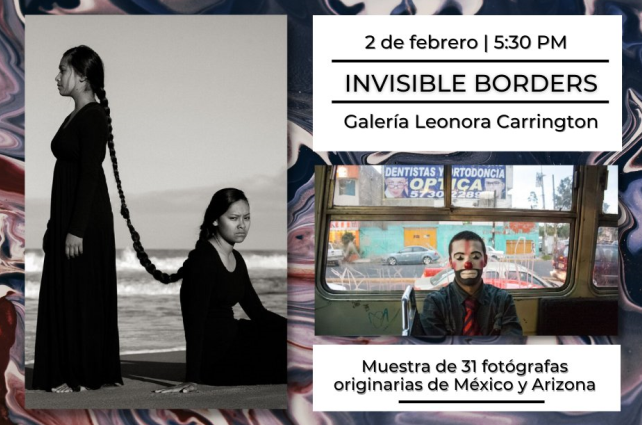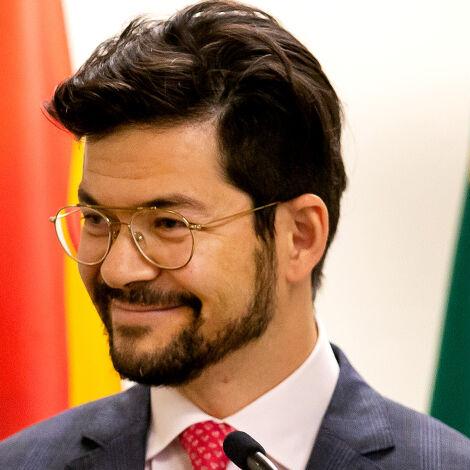Al vivir en esta región, que es una de las fronteras internacionales más emblemáticas y conocidas a nivel mundial, cabe preguntarse qué debemos entender por ese concepto. Al dividir dos países, estas separaciones pueden decirse “naturales”, cuando se trata de un accidente geográfico que el ojo humano aprecia fácilmente. Por ejemplo, ríos como el Bravo, una parte del Colorado, el río de la Plata o el Danubio; o la dirección hacia donde corren las aguas en cordilleras como los Andes, los Alpes o el Himalaya.
En muchas ocasiones, sin embargo, no son más que líneas imaginarias acordadas entre países, aunque han sido motivo frecuente de conflictos o juicios internacionales. Pueden tener delimitaciones físicas como cercos, alambrados, muros o simplemente ser una sucesión de hitos para saber dónde termina un territorio y empieza otro.

Rafael Barceló Durazo.
Las fronteras pueden haber sido delimitadas en tratados bilaterales, como el Guadalupe Hidalgo entre México y Estados Unidos, que hace 175 años trazó una nueva frontera como capitulación de la guerra que siguió a la invasión estadounidense de México (con una reforma 5 años después con la adquisición estadounidense de La Mesilla). Estas fronteras políticas, además, con frecuencia se traslapan con los territorios de pueblos originarios preexistentes a los países como hoy los conocemos.
Esas líneas, sean naturales o imaginarias, crean regiones únicas. Sobre todo, cuando a uno y otro lado son distintos el idioma que se habla, las leyes que se aplican y el desarrollo económico. Esas diferencias causan la impresión de que la frontera fuera un orden natural preexistente y hacen olvidar que, en realidad, surgieron aquéllas como consecuencia de ésta.
Las regiones transfronterizas suelen crear su propia identidad, porque los intercambios son más frecuentes y hay una mayor conciencia sobre la otredad, sobre lo que está “del otro lado”. Esto genera una riqueza y diversidad cultural muy propias de estas áreas de transición, además de oportunidades económicas únicas y valores como la apertura o la aceptación de lo diferente.
El concepto de frontera, no obstante, trasciende a las que existen entre países. Las ciudades también han creado sus propias divisiones entre barrios marginales y periféricos separados de los centrales o prósperos. Lo urbano también se ha separado de lo rural, el norte global del sur global, los géneros han creado divisiones al asignar roles preconcebidos o distribuir las oportunidades inequitativamente. Cada individuo relaja o endurece las fronteras que establece con el mundo, erigiendo muros invisibles para aislarse o unirse a otras personas.
El 2 de febrero se inauguró en el Consulado de México en Tucsón una exposición de fotografías con ese título, “Fronteras invisibles”, conformada por imágenes tomadas por 31 fotógrafas mexicanas y de Arizona. Fue traída a Tucsón para ser exhibida en la galería Louis Carlos Bernal de Pima Community College. Estará abierta para su visita libre y gratuita en el Consulado de lunes a viernes, de 8 a.m. a 5 p.m. hasta el mes de abril.
Las fotógrafas –todas mujeres– pertenecen a tres colectivas: Fotógrafas del Norte, Fotógrafas del MAPA y Borderlens Southwest. Sus integrantes tienen diferentes técnicas, enfoques, reconocimiento profesional y experiencias. Las ha unido la misión de apoyarse, de unir fuerzas, de mostrar al mundo cómo ve cada una a su mundo.
Se trata, paradójicamente, de un trabajo artístico colaborativo que no dejó que las limitara ni la frontera mexicoestadounidense ni las barreras de las lenguas. En sus imágenes uno puede observar esas fronteras invisibles que separan –o unen– lo doméstico, lo urbano y lo humano. Ver las fronteras para entenderlas, es también un ejercicio que puede acercar lo que algunos quisieran dividir.
Curada por la Galería Mitotera, esta exposición de 12 artistas visuales -muchos de ellos latinos- aborda la definición de rasquache, término que en la cultura chicana simboliza la actitud de hacer las cosas por uno mismo con objetos que parecen carentes de valor. Abierta hasta el 18 de marzo en la galería Pidgin Palace Arts, en 1110 S 6th Ave, en Tucsón.
Los artistas participantes son Mel Domínguez, Rubén Urrea Moreno, Danielle Love, Cristina Cárdenas, Carolyn King, Sophia Mayorga, Racheal Rio, Robert Ríos (Tata Homie), Lower AZ, Lupita Chávez, Zeke Cook y Tony DiAngelis.
ENGLISH VERSION
The invisible borders
Living in this region, which is one of the most emblematic and well-known international borders in the world, it is worth asking what we should understand about this concept. When dividing two countries, these separations can be said to be “natural”, if there is a geographical feature that is easily seen. For example, rivers such as the Grande, a part of the Colorado, the Río de la Plata or the Danube; or if waters run to one side or the other in mountain ranges such as the Andes, the Alps or the Himalayas.
On many occasions, however, they are nothing more than imaginary lines agreed between countries, although they have been a frequent source of international conflicts or trials. They can have physical markers such as fences, walls or simply be a succession of milestones to know where one territory ends, and another begins.
The borders may have been divided by bilateral treaties, such as the Guadalupe Hidalgo between Mexico and the United States, which 175 years ago drew a new border as a capitulation of the war that followed the US invasion of Mexico (with a reform 5 years later with the US acquisition of the Gadsden Purchase). These political borders, moreover, often overlap with the territories of indigenous peoples, pre-existing countries as we know them today.
Those lines, whether natural or imaginary, create unique regions. Above all, when the language spoken, the laws that are applied and economic development are different from one side to the other. These differences give the impression that the border was a natural order and make us forget that, in reality, might have arisen because of the border.
Cross-border regions tend to create their own identity, because exchanges are more frequent and there is a greater awareness of otherness, of what is “on the other side”. This generates a cultural richness and diversity very typical of these transition areas, as well as unique economic opportunities and values such as openness or acceptance of the different.
The concept of borders, however, transcends those that exist between countries. Cities have also created their own divisions between neighborhoods separate from central or prosperous ones. The urban has also separated from the rural, the global north from the global south, genders have created divisions by assigning preconceived roles or distributing opportunities unequally. Each individual relaxes or hardens the boundaries he sets with the world, erecting invisible walls to isolate themselves or to join others.
On February 2, an exhibition of photographs titled, “Invisible Borders”, was inaugurated at the Mexican Consulate in Tucson, consisting of images taken by 31 Mexican and Arizonan photographers. It was brought to Tucson to be exhibited at the Louis Carlos Bernal Gallery at Pima Community College. It will be open for free visits at the Consulate Monday through Friday, from 8 am to 5 pm (3915 E Broadway) until April.
The photographers – all women – belong to three groups: Photographers of the North, MAPA Photographers and Borderlens Southwest. Its members have different techniques, approaches, professional recognition and experiences. They have been united by the mission to support each other, to join forces, to show the world how each one sees her world.
It is, paradoxically, a collaborative artistic work that did not let them be limited by the Mexican American border or language barriers. In their images one can observe those invisible borders that separate – or unite – the domestic, the urban and the human. Seeing borders to understand them is also an exercise that can bring closer what some would like to divide.
Fotos: Nevadas en Tucsón en los años 60s

Snowmen starting to thin out as the temperature warms up after a snowstorm in Tucson on Dec. 17, 1967.

Snow on the El Con Mall sign in Tucson on March 3, 1964, ironically welcoming the Cleveland Indians for Spring Training.

Snow on the playground at Reid Park Tucson on March 3, 1964.

Snow on the Pima County Courthouse in Tucson on March 3, 1964.

Snowfall at Hi Corbett Field, Tucson, on March 3, 1964.

Women throw snowballs in Reid Park, Tucson, on March 3, 1964.

Snowfall in Tucson on March 3, 1964.

Snow at Saguaro National Park East (then, Saguaro National Monument) on Dec. 23, 1965.

Snow and ice at Kitt Peak National Observatory on March 3, 1964.

Snow and ice clinging to the telescope structure at Kitt Peak National Observatory west of Tucson on March 3, 1964.

Snowfall in El Encanto Estates, Tucson, on Feb. 10, 1965.

Snow in El Encanto Estates, Tucson, on Feb. 10. 1965.

Mothballed planes covered with snow at Davis-Monthan AFB in Tucson on Feb. 10, 1965. The Rincon Mountains are in the background.

Those who needed a sign to tell them it was snowing were happily obliged by Tucson resident Ken Newman at Old Spanish Trail and Golf Links Road on Dec. 23, 1965. If the Tucson Citizen/Arizona Daily Star photo archives are any barometer, the Tucson area got good doses of snowfall in the 1960s. Go to tucson.com/retrotucson to check out the black-and-white scenes of a snowy Tucson.

Snow on the Santa Catalina Mountains north of Tucson as seen from downtown on Feb. 11, 1966.

A motorist awaits service from a tow truck driver during a snow storm on Dec. 17, 1967 at a Skaggs Drug Store on East Broadway in Tucson.

A chance encounter with Santa at Skagg's Drug Store on Broadway during a snow storm in Tucson on Feb. 17, 1967.

Snow clogs the Catalina Highway to Mt. Lemmon at 5,400 feet elevation on Feb. 18, 1967. Rock slides up ahead kept motorists from going further.

Snow in the Santa Catalina Mountains north of Tucson on Feb. 20, 1969.

Snow in the Santa Catalina Mountains north of Tucson on Feb. 20, 1969.

Snowfall drapes the trees along the Catalina Highway to Mt. Lemmon at about 7,500 feet on Dec. 6, 1969. Total snow accumulation was about nine inches.





